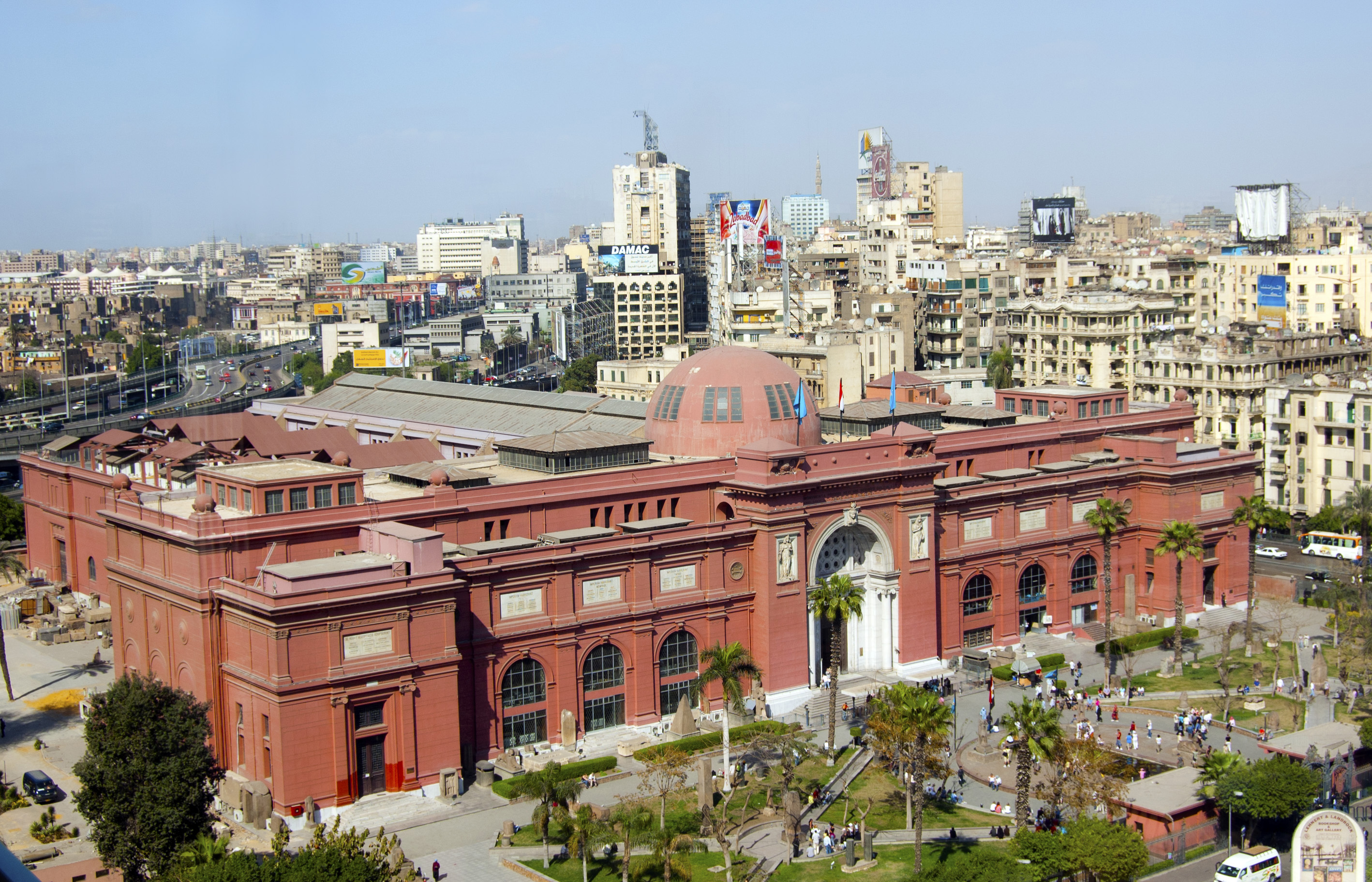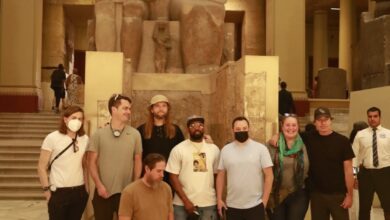Following days of nationwide protests, Tahrir Square’s “week of resistance” celebrates the square as a “liberated zone” while also raising questions about its future.
The square has been the site for protesters across the city since 25 January–the day Egyptians called for the end of Egyptian President Hosni Mubarak’s regime. Today, protesters pride themselves for maintaining the stronghold, despite attempts–including a fierce battle against pro-regime thugs that took place on 2 February–to squash it. Besides being a safe haven and powerhouse for Egypt’s young protesters, the square also constitutes a hub of political pressure for regime change.
The mood of the square is festive. Musicians perform on a makeshift stage, street vendors sell tea, drinks and food, and groups write anti-regime slogans on the ground using chalk and stones. Tents have been set up to provide shelter for those spending the night.
Groups surge spontaneously from different directions, chanting the uprising’s seminal slogans: “The people want the regime to fall,” and “Leave!” while Muslim and Christian prayers are held and weddings and birthdays are celebrated. Protesters share newspapers, food and political talk, amid frequent references to London’s famed Hyde Park.
The question is, however, how can Tahrir continue to serve as an effective lever for achieving political change.
“People are still in the process of discovering their political potential as they enter into battle with the regime’s head,” says Alaa Saif, a leftist activist who has camped in Tahrir since 2 February.
The main impediment to realizing this potential is the specter of constant threat, Saif says. The feeling not only results from the government-initiated 2 February attack on the square through armed thugs, but also from elements internal to the opposition itself. “It is also about the opposition forces who haven’t been addressing the square, while talking on its behalf. The square feels besieged,” said Saif.
On 6 February, newly appointed Vice President Omar Suleiman met with traditional opposition parties, the Muslim Brotherhood, the recently formed ad-hoc wise men committee and some youth leaders. During the meetings, they discussed demands for constitutional changes and the lifting of Emergency Law. In the square, however, the negotiations feel alien–if not offensive–to the majority of protesters, who continue to insist on Mubarak’s immediate and unconditional departure.
For the square to become a political hub, people need to move beyond slogans and begin articulating their political aspirations, says Saif. He points to people demanding social justice as an example. “This could consolidate an aspiration for a leftist-centrist government,” he says. “People need to start grouping inside the square, discussing politics and writing papers.”
The uprising should not be centralized in the square, say some protesters. “The revolution needs to expand elsewhere, such as professional syndicates,” says Ibrahim al-Houdeiby, a young member of the Muslim Brotherhood, who has spent the last few days in the square.
While believing in the necessity of expanding beyond Tahrir, al-Houdeiby remains confident of the square’s function.
“What matters is the media discourse built around the square. We shouldn’t be defensive. If the strike is disruptive, then the regime should be held responsible for any losses until our demands are met,” al-Houdeiby says.
Al-Houdeiby recalls that most of the economic losses incurred during the uprising were caused by the security void, the proliferation of thugs and thieves, internet and cellular telephone outages, all of which are caused by the regime.
Speeches by Mubarak on 29 January and 1 February, when he pledged to dismiss his cabinet and avoid running for another presidential term, effectively decreased public support for Tahrir protests. Many of those who had initially supported the protests changed course and began to believe that, for the sake of stability, protesters should accept the president’s concessions as sufficient.
Like al-Houdeibi, Asef Bayat, a professor of sociology at the University of Illinois who specializes in street politics, tells the Tahrir youth, “It is important that [Tahrir] remains in the hand of the revolutionaries, as a space where popular demands emanate and get articulated, and then communicated to the authorities as well as to the 'leadership' of the uprising, whoever it is.”
There should be an “organic” relationship between the leadership and the square, he adds.
“I cannot see why some negotiators cannot appear in Tahrir to discuss the terms of negotiations. Why not listen to people in Tahrir?” Bayat asks, adding that while the regime is expected to attempt to foment divisions within the opposition, the opposition should work to avoid reinforcing them.
Also like al-Houdeibi, he insists that isolation can be lethal to the square and the uprising.
For Bayat, although Tahrir festivities constitute a normal part of street politics, some thought should be given to long-term planning. “Street politics of this sort should and will come to an end sooner or later. This cannot go on forever. Revolutions are exceptional moments in a nation’s history and in people's lives. Tahrir should think what it wants to do if things drag on; or make sure that things will not drag on.”
Abdel Aziz EzzelArab, who teaches political thought at the American University in Cairo and participated in a 1972 student movement demanding a resolution to the conflict with Israel, also worries about the square’s future.
“The most important challenge facing Tahrir Square is how to transform it into a sustainable political movement,” he says, stressing that this should be the main political objective. Observing the development of the movement, EzzelArab notes that the major success is the spirit that has unfolded which promises a different political culture altogether. Tahrir should continue to inspire a new political culture, he says.
In light of the regime’s difficulty in dealing with the unarmed uprising, EzzelArab believes that Tahrir should maintain its focus on political change from the grassroots level.
“I think it’s important to question the function of the movement, while knowing that things have developed quickly. The main thing to focus on now is to push for change that can create the political space for the movement to thrive with equal access to media and public space,” he says.
EzzelArab does not see much value in negotiating constitutional changes that change presidential candidacy requirements, as long as restrictions on social life and political practice continue to linger.
In Tahrir, the youth are entertaining the concept of a "revolutionary legitimacy" to replace that of "constitutional legitimacy." The abrogation of the Constitution poses a series of challenging possibilities that include a military takeover and a continuation of Emergency Law, among others.
But for al-Houdeiby, the revolution’s ultimate impact depends upon the people.
“This revolution is about people, not ideologies. What matters is the will of the people in the square.”




